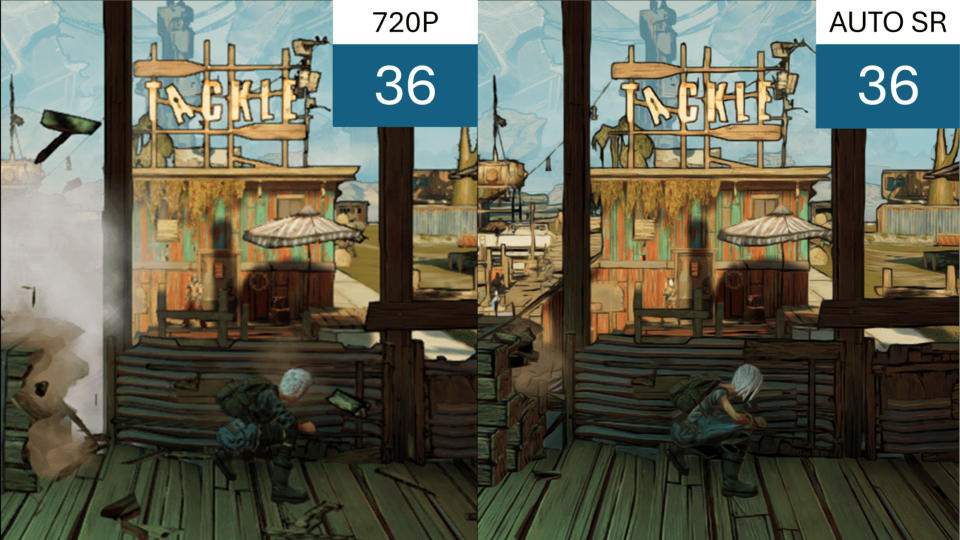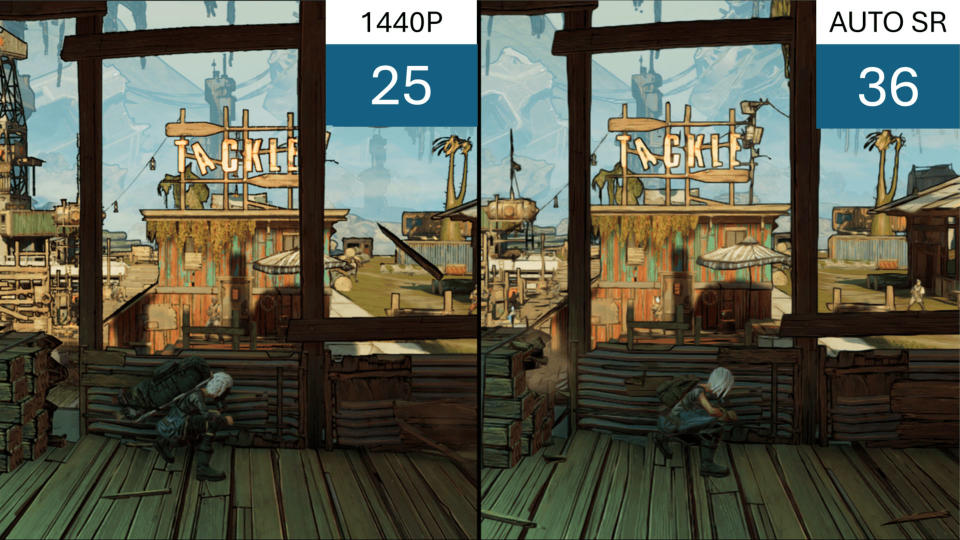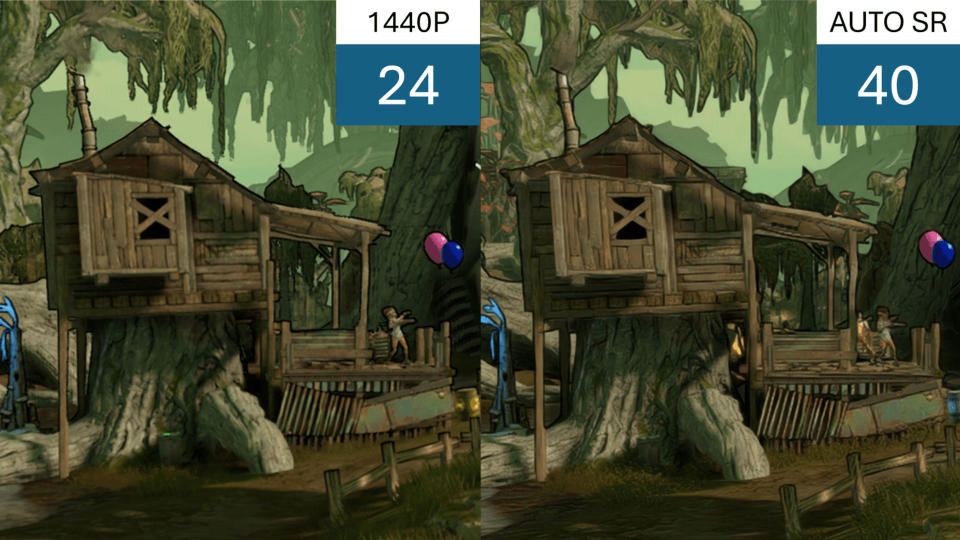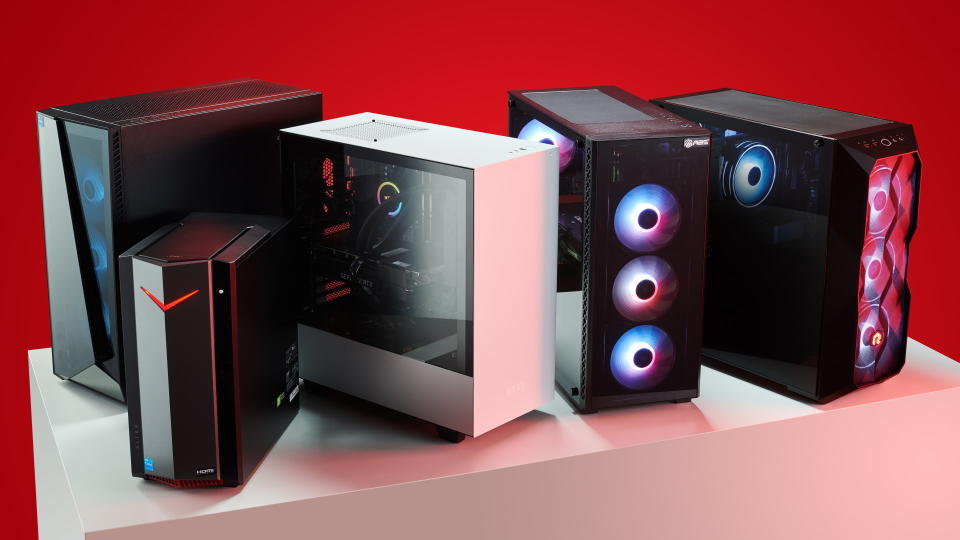News that Microsoft develops its own AI-powered image amplifier So-called Automatic Super Resolution for games first appeared in February, later this system was only available on Copilot+ AI computers. Currently the only systems in this ecosystem are Snapdragon X laptops from Dell, Asus, MSI and other companies. However Microsoft explains in a blog Looking at how Automatic Super Resolution works, the computer just needs to have a suitable NPU in its main processor so it can be made available to more players.
Super resolution, or upscaling as it is commonly called, involves rendering a frame at a lower resolution before running a series of mathematical operations to increase the resolution to that of the monitor. The obvious benefit is that the game will run much faster, but the upgrade often creates a lot of visual artifacts, especially with transparent objects, particles and fast movements.
Nvidia uses: convolution neural networkVia Tensor cores on GeForce RTX graphics cards to scan for an upgraded frame and clean up any issues. Intel does the same Arc-specific XeSS but the generalized version is the same AMD’s FSR—numerous smart shader routines calculate the best possible raised frame instead of using artificial intelligence.
Microsoft’s Auto Super Resolution (ASR) works somewhat similar to DLSS and Arc-only XeSS in that a neural network is used in the upscaling algorithm. However, instead of using dedicated cores on the GPU, ASR runs the network on the NPU, a neural processing unit. Currently these are only available on certain CPUs: Intel’s Meteor Lake, some APUs from AMD, and Qualcomm’s Snapdragon X—and handle math routines common in AI workloads.
The idea behind incorporating an NPU into a processor is that AI elements can be offloaded from the CPU or GPU and run in a low-power part of the chip. They look a bit like the matrix cores you get in an Intel Alchemist GPU.
But even if you have a PC with any of these chips, you won’t necessarily be able to enable ASR as it’s currently limited. Copilot+ AI PCs It uses Snapdragon X processors. Since these types of laptops don’t include a powerful GPU, gamers will want to enable upscaling wherever possible to ensure games run as best as possible. This normally relies on developers integrating DLSS, FSR, or XeSS into their games, but ASR bypasses this requirement entirely.
That’s the good news about ASR. Now, there is some not-so-good news.

This Borderlands 3 comparison shows how Auto SR’s neural network can improve 720p images


This Borderlands 3 comparison shows native 1440p rendering (left) and 720p Auto SR (right)


This Borderlands 3 comparison shows native 1440p rendering (left) and 720p Auto SR (right)
through the use A simple migration in WindowsThe NPU-powered upgrade will be automatically applied to all ASR-compatible games (hence the name). Unfortunately, There aren’t many games on this list—there are only 14 in total, and only 11 are currently guaranteed to work.
It is also worth noting on Microsoft’s blog that ASR, unlike DLSS, FSR and XeSS, does not rely on temporal frame information from games. Instead, it transfers the fully rendered low-resolution frame to the NPU, which then performs the upscaling and image correction process using a large convolutional model. Once this process is complete, the full resolution frame is displayed.
Your next machine


best gaming computer: The best prebuilt machines.
Best gaming laptop: Great devices for mobile games.
Other scalers work entirely within the domain of the GPU, helping to ensure that all of this is rendered as quickly as possible. Microsoft says that using the NPU for ASR in this way adds an additional ‘latency frame’ to the game, but claims that “in our testing, most players did not notice this lag, and when they did, it was sharper.” “The graphics and higher frame rates more than make up for this, improving the overall gaming experience.”
It’s something you do don’t do that deal with any booster and give it Qualcomm’s Snapdragon X series supports AMD’s FSR systemI suspect gamers and developers are more likely to trust this booster than Microsoft. The proof will be in the pudding, of course, and if Auto Super Resolution works well despite its limitations, Copilot+ AI PC owners can at least enjoy a decent gaming experience.
At least in theory. Once we get our hands on some Snapdragon X laptops at the office, we’ll be sure to put it to a thorough test.